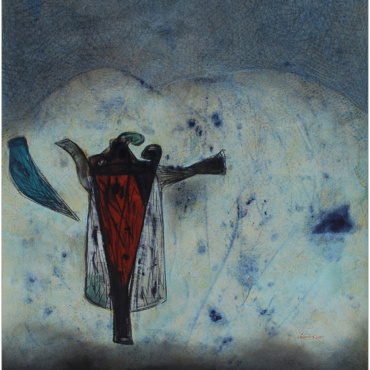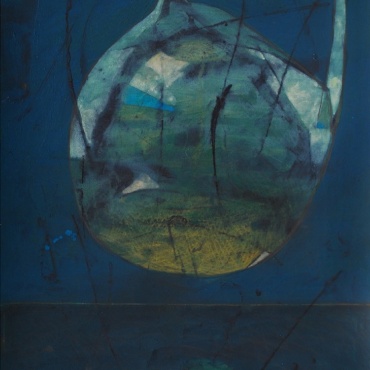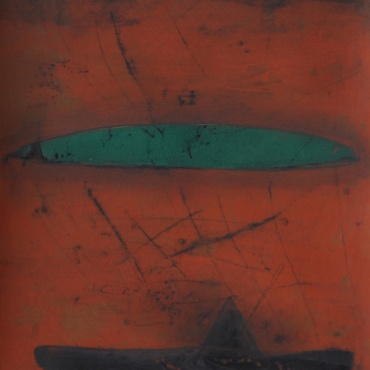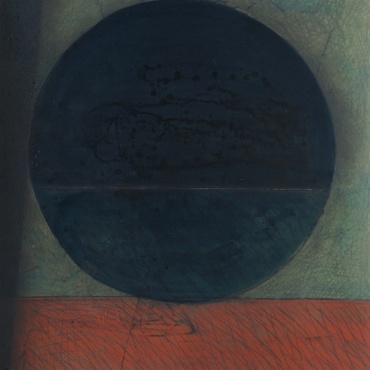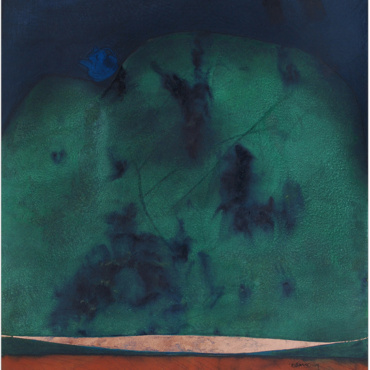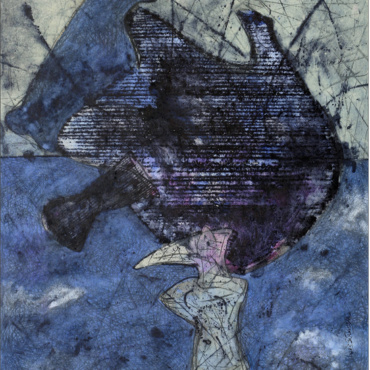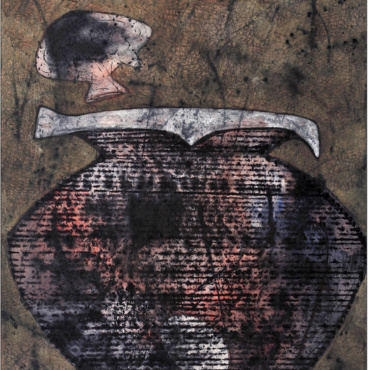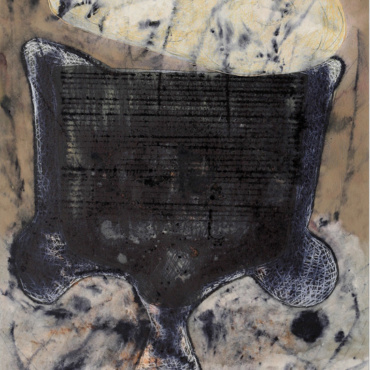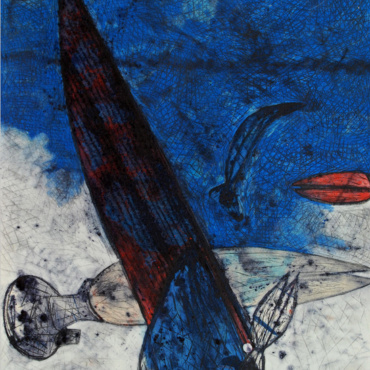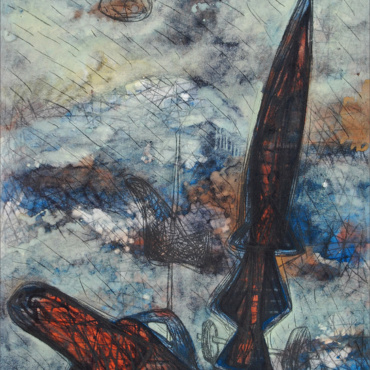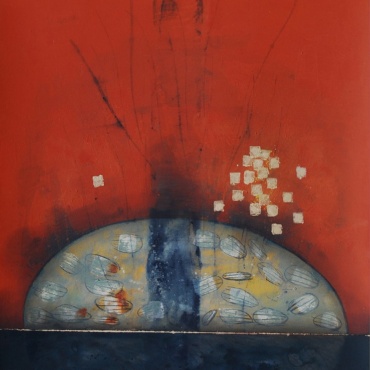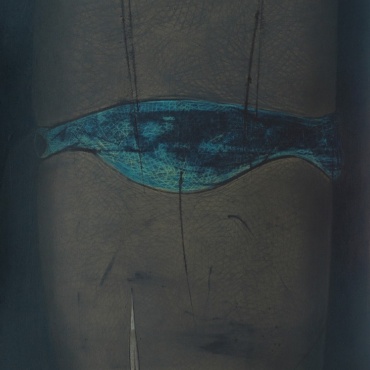Sailing in the dark
Does soil voice its say? Not every one of us feels the same way. The only person who can experience something like this is someone who initiates correspondence with soil, communicates with it and may listen to it as well. Such a connection does not develop in a day. This is some sort of perseverance. And if he is an artist, he does not like to give the soil any shape even after kneading it with his own hands; he rather prefers to wait and see how the soil is trying to have a shape. The soil demands this much freedom from an artist to achieve the shape of a work of art. The artist, Partha Dasgupta can perceive such connection and we can discern its reflection is his works.
But how should we identify Partha Dasgupta? Each morning, with opening of a media we find his amazing drawings done in ink and brush. Although slightly, it reminds us of Chinese style but the theme evolves around the quintessential spirit of Bengal. Art does not belong to any country. After 1990, this territorial boundary no longer exists; and retaining this fact in mind, Partha illustrates the very own rhythm of light and shadow on board in tempera or mixed media. His painting does nothing but delves deep inside the world of art. To enter this inner quarter of art, Partha embraces not only drawing or painting but inevitably sculpture and design as a mode of self-expression–he includes everything in his creative sphere. What seems obvious in present world is that art would not remain confined within the limit of colours and lines, this impact is distinctly noticeable in Partha’s work. To accentuate this expression he assembles different mediums in his ceramic art. Ceramic originates from soil–Partha mixes various mediums into soil and patiently waits to see what it would like to evolve into. He gives shapes to his work accordingly. This is why spontaneity can be observed in his endeavours. They are not the outcome of any forceful effort; like a sapling that eagerly waits for the future, his works develops naturally and at ease.
But since when did this urge to converse with the soil became inherent in the artist? It is not predictable that someone would become an artist immediately after his birth. A prolonged period of practice is closely associated with it and during this journey an artist experiences the essence of art and provides its shape accordingly. After passing from the Government Art College in the year of 1992, he joined Kala Bhavana to complete his graduation after six years. Meanwhile he remained associated with CGCRI, Kolkata, Lalit Kala and the remote rural areas where he developed his skill and art of communication with soil. At the same time he fancied to surpass the limitations of curriculum that he had experienced during his learning of ceramics in the Government Art College. At Kala Bhavana he had Jogen Chowdhury as his professor. As Kala Bhavana was almost the home to Sanat Kar, Partha had regular discussion with him regarding work. Besides, there were Somenath Hore, K. G. Subrahmanyan and Riten Mazumdar. Mention should be made of Sushen Ghosh, one of the then professors of the Department of sculpture of Kala Bhavana, because most of the discussions took place between them. Partha developed clear idea of geometric division of the basic structure of his work only after talking to Sushen Ghosh. Much later we found Partha planning the theme of Durga Puja in Kolkata where his training was clearly reflected. This reflection was surely to be noticed in his handling of ceramics. One cannot deny the influence of Arun Som, the professor of ancient history who informed Partha about the evolution of ceramics from time to time. The curriculum of Kala Bhavana expanded his artistic horizon. Now let us think about the contemporary liberal international market that penetrated the inner world of art; it did not keep the artist confined in any particular medium as far as his self-expression was concerned. For Partha, all the windows remain wide open.
Now, we should drive our attention to a fundamental question. How far sculpture and ceramics differ from each other? If ceramics is solely based on soil, then the exposure to sculpture and paintings renders it all the more relevant. The basic shapelessness of soil needs an artistic touch after burning. Simultaneously, the change of colour should be kept in mind. Thus, sculpture and painting together give shape to ceramics. So, Partha had to retain his spontaneity, or it may be said that he expressed equal emotion in all the mediums. So, this time, in the exhibition, Debovasha does not display his ceramics, but his paintings. The thematic form of those paintings is abstract. Like symbols, some of the fragmented pieces of the objects of daily use have been exployed to create an oscillation between form and abstraction. Most of the works have been done in powdered colour and charcoal. They are not mingled on the palette but they remain side by side on the canvas. It may be noted that Partha followed the same method in ceramics, doesn’t he? It is you, viewers to judge whether his technical expertise could touch the inner self of art. The name of the exhibition is ‘Sailing in the dark’ as decided by the artist himself but we have discovered the lyric of light and shadow in this series…


